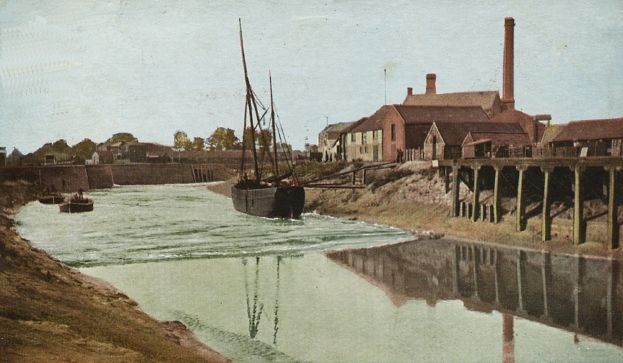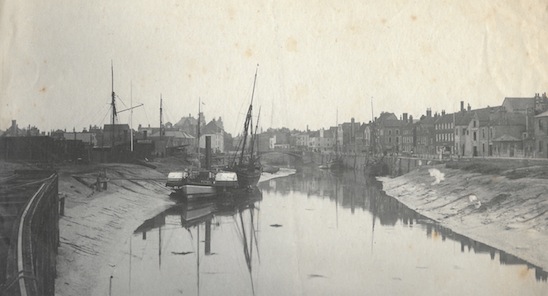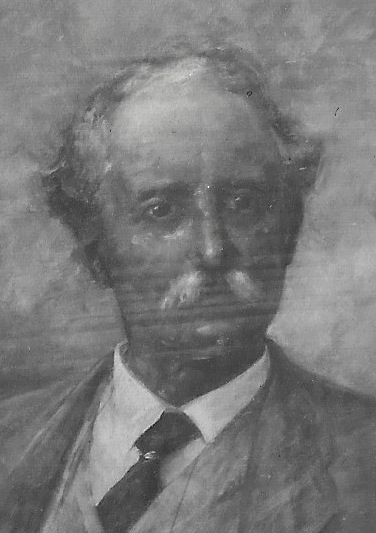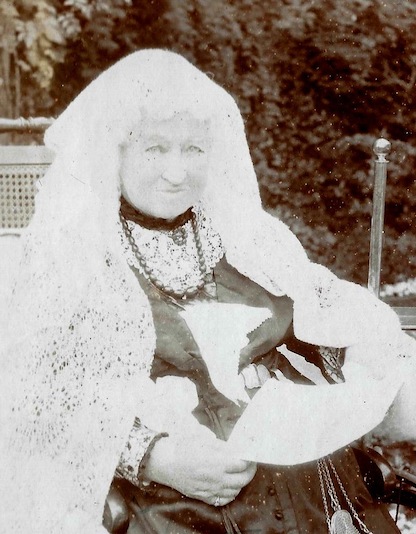Alfred was born in Exeter.
Alfred, with his brothers,
went into the Bridgwater, Somerset, business of brick and tile baking,

|
One of the many kilns in Bridgwater,
the one founded by Alfred (and brothers) in 1858, still exists.
It functioned until 1965 and was later turned into a museum (see
South West Heritage Trust).
That website is also the source of the image at right.
From the website
Historic England:
The Barham Brothers' Works produced materials for the building trade including the distinctive Bath Brick and a range of roofing tiles and assorted decorative products such as terracotta plaques and gable end finials.
The outer part of the kiln, known as the hovel, is brick-built in
a typical bottle-shape, with a circular base wall approximately 4m in
diameter below, and a cupola-shaped top above, tapering to the
original up-draught chimney.
It is estimated to be up to 21m from base
to chimney. The upper part of the kiln is reinforced with iron bands
to counteract cracks caused by the heat. Inside the hovel, the oven chamber is countersunk about 2m below ground level and has eight surviving fire-mouths or grates set into it. The circular base wall of the kiln is enclosed by a brick-built building, of a date contemporary with that of the kiln, approximately 12.5m square and rising to roof level at which height the kiln structure begins to taper. Louvres set within the wall of this building were designed to control the air flow within the kiln.

Painting of the Barham Yards, 1907, with incoming tide, Bridgwater
(from
Bridgwater Town Council).

Waterway at the Foster Barham works. Looking upstream,
the photo was taken in 1894, likely from the quay of the works
(from pAJnS).
Eliza was the daughter of
Timothy Jevons (1798-1874), iron merchant at Nelson Street in Liverpool,
and Catherine Lomax (1798-1858) of a methodist family.
It is said that Eliza was one of "the beauties of Bath" (APFB).
Children in Bridgwater, Somerset: 1855 Arnold, 1858, Herbert,
1859 Francis Edward (+1937), 1861 Catherine, 1863 Eliza, Mary, 1866 Sarah,
1867 Hugh Garret, 1872 Margaret, 1873 Guy, 1878 Rosalind.
[See at
geni: Eliza Jevons.]
|
Eliza Jevons, photo of unknown date, likely taken by son Hugh, ca. 1902. |
The family must have been well-to-do.
APFB: They were culturally active and their house had a separate music room.
There also exists a painting of Alfred playing the violin.
And Alfred translated German into English (he had studied at Leipzig).
Some of his character can be gleaned from the following story. APFB: He was quite angry when the rooster next door crowed early and woke him up. He wrung its neck and gave the neighbours twice the value in cash.
As for affluency, e.g., one of their children (Hugh) was sent to the historic and reknowned public school Berkhamsted.
APFB: They also travelled, after retirement, and stories mention Egypt (to study the pyramids and Egyptology). They probably owned a house in the Alps.
Alfred died in 1901, Eliza died in 1924.
APFB = Helen Aroha Pasley née Foster Barham, great granddaughter.
pAJnS = photo archive
of Aprilla Jacometti née Stanford, great granddaughter.
To enlarged images.
Back to the genealogy of AFB and EJ.


